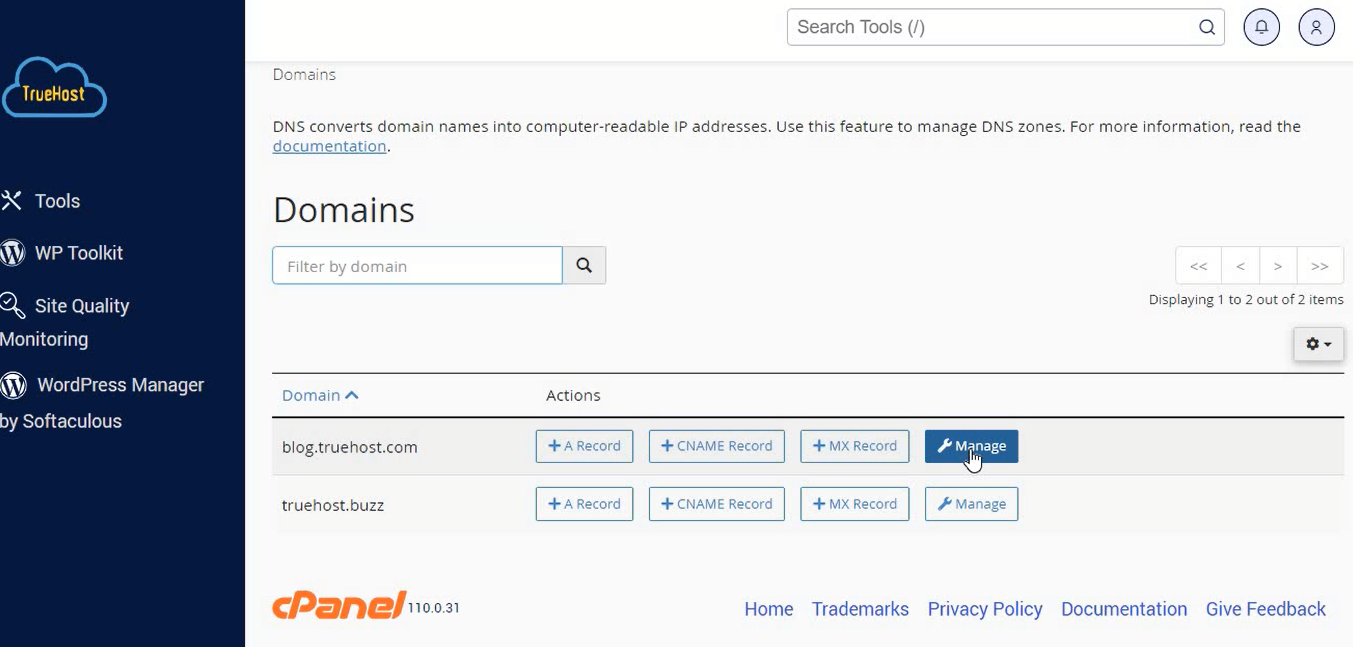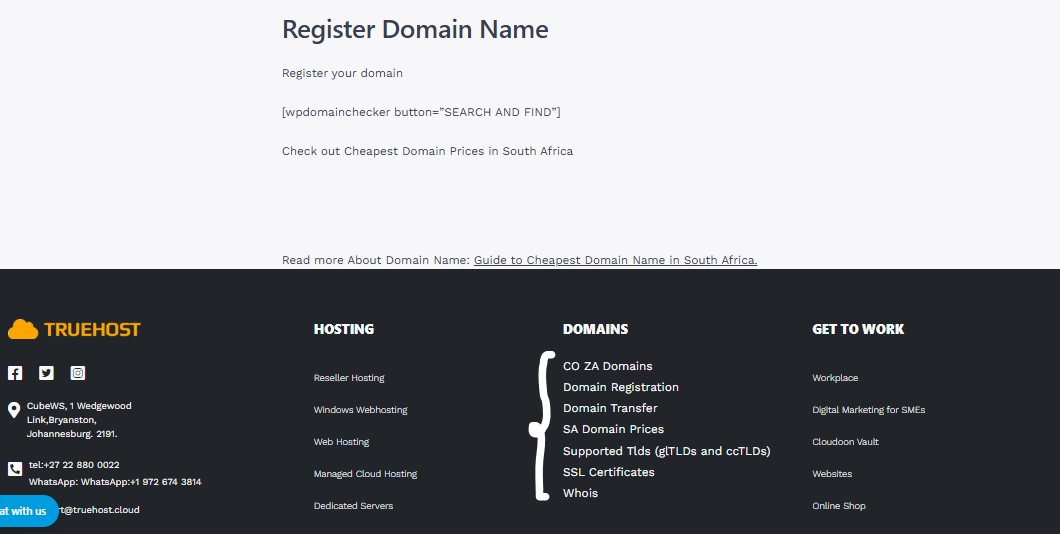DNS propagation is one of those tech terms that will make you think, “Do I even need to know this?”
Back in the days when the concept of “internet” was taking off, “DNS propagation” was the center of attention at almost all workstations.
Well, in the modern context, it refers to the process that occurs whenever someone tries to access a website.
However, if you are planning to launch a new website, change website hosts, or manage a domain, it is best to get acquainted with it.

In this piece, we will explain what DNS propagation is and how it functions.
On that note, we would also like to take a moment to explain why it is a prominent feature for business owners, freelancers, and even the tech guys.
The unsurpassed brilliance, actionable advice, professional insights, and hands-on experience that you will receive on the subject will groom you for pro venturing.
In short, it will allow you to know DNS without burning a fuse.
Now, let’s get started.
Table of Contents
What is DNS Propagation?
Have you ever wondered how you can locate a website on the world wide web?
DNS propagation helps in this regard and is a lot easier a concept than you anticipate.
You have likely come across dealing with domains and hosting.
So, DNS, or Domain Name System, can be likened to the internet’s phonebook, linking your business’s name (like www.yourbusiness.co.za) to the server it is stationed on.
DNS propagation is the spreading of updates to the phonebook across the world’s DNS servers.
Think of it as sending a notice to all internet servers to update the address of a particular website.
The Basics of DNS: A Quick Overview
As a user, navigating to a given website requires typing it on a browser, which at that instance sends a querying message to a DNS resolver, which is normally run by their local ISP, like Vodacom or MTN.
The resolver makes the local query to the authoritative DNS servers to get the IP address (like 192.168.1.1) of the required site.
These servers are scattered globally, including in South Africa, where local data centers in places like Sandton help speed things up.
But when you make changes—say, switching hosting services or updating your domain settings—those updates need to reach every server.
That’s DNS propagation, and it’s not instant.
Defining DNS Propagation
So, what exactly is DNS propagation?
It’s the time it takes for DNS changes to spread across all servers worldwide.
Think of it like updating your contact info with everyone you know.

Some servers get the update quickly, while others, especially in areas with slower internet like rural Limpopo, might take a bit.
This process ensures that when someone visits your site, they’re directed to the right server.
Why DNS Propagation Takes Time
Here’s the kicker: DNS propagation can take anywhere from a few hours to 72 hours.
Why? Two big reasons: TTL (Time to Live) and caching.
TTL is a setting that tells DNS servers how long to store your old DNS info before checking for updates.
A TTL of 24 hours means some servers might hold onto outdated info for a full day.
In South Africa, local ISPs might cache records longer to save bandwidth, especially in areas hit by load shedding.
Plus, the global DNS network involves thousands of servers, and not all update at the same speed.
It’s like waiting for news to spread in a small town—some folks get it fast, others need a nudge.
South African Context
For South African businesses, DNS propagation can feel like a waiting game.
If you’re in a bustling hub like Johannesburg, updates might roll out faster thanks to better infrastructure.
But in rural areas or during power outages, delays can stretch out.
Truehost’s domain management tools can help you monitor and manage this process, making it easier to keep your site live and accessible.
How DNS Propagation Works
Alright, let’s get into the nuts and bolts of how DNS propagation actually happens.
When you update your DNS settings, maybe you’re moving your site to a new server; the internet needs to catch up.
Here’s how it goes down.
1) The DNS Resolution Process
When someone visits your website, their device asks a DNS resolver, “Where is www.yourbusiness.co.za?”
The resolver checks with authoritative DNS servers, which hold the official records for your domain.
If you’ve just updated your records, those servers need to share the new info with resolvers worldwide.
That’s DNS propagation—spreading the update across the internet’s vast network.
In South Africa, this process can be affected by local infrastructure, like how fast ISPs like Telkom process queries.
2) The Role of DNS Records
DNS records are like the instructions in the internet’s phonebook.
Here are the key players:
- A Record: Connects your domain to your server’s IP address.
- CNAME Record: Points one domain to another (e.g., www to non-www).
- MX Record: Directs email to your mail server.
- TXT Record: Verifies ownership or adds security settings, like SPF for emails.
When you change any of these records, DNS propagation kicks in to update servers globally.
Truehost’s cPanel makes managing these records straightforward, even for non-techies.

3) How Changes Trigger Propagation
Let’s say you’re migrating your site to a new server.
You log into Truehost’s control panel and update your A record to point to the new IP address.
Your authoritative DNS server gets the update instantly, but other servers (like those used by ISPs in Durban or Bloemfontein) rely on cached data until their TTL expires.
As they refresh, they pick up the new info, and your site starts appearing correctly for more users.
4) Timeline of DNS Propagation
Typically, DNS propagation takes 24–72 hours, but it’s not set in stone.
In urban areas like Cape Town, with robust internet infrastructure, updates might propagate in a few hours.
In rural areas or during connectivity issues, it could take the full 72 hours.
Factors like TTL settings, ISP caching, and even server load play a role.
5) South African Challenges
South Africa’s internet landscape adds some spice to DNS propagation.
Load shedding can disrupt server communication, slowing updates.
Some ISPs cache DNS records longer to save bandwidth, meaning your customers in East London might see your old site while those in Sandton see the new one.
Understanding these quirks helps you plan better, especially when launching a site or switching hosts.
Why DNS Propagation Matters for South African Businesses
So, why should you care about DNS propagation?
If you’re running a business in South Africa, it can impact your bottom line.
Let’s break down why this matters.
a) Impact on Website Availability

During DNS propagation, some users might see your old site, others the new one, and some might hit a “site not found” error.
Imagine a customer in Polokwane trying to buy from your e-commerce site, only to get a blank page.
That’s a lost sale, and in South Africa’s competitive market, every customer counts.
Proper DNS management can minimize these disruptions.
b) Effects on Email and Other Services
DNS propagation isn’t just about websites.
If you’ve updated your MX records for email, some clients might not receive your messages until propagation finishes.
For a Pretoria startup relying on email marketing to launch a campaign, that delay could mean missed opportunities.
Other records, like TXT for security, can also affect services if not propagated correctly.
c) SEO and User Experience
Search engines like Google don’t play nice with downtime.
If DNS propagation causes your site to be unavailable or inconsistent, it could hurt your rankings, especially for local searches in South Africa.
Plus, customers expect fast, reliable websites.
A slow or inaccessible site during propagation can drive them to competitors, damaging your brand’s reputation.
d) Business Continuity
For South African SMEs, staying online is critical.
Unfortunately, DNS propagation issues can disrupt your operations.
Truehost’s reliable hosting solutions ensure your DNS changes are handled efficiently, keeping your business running smoothly.
Challenges of DNS Propagation in South Africa
South Africa’s unique tech landscape throws some challenges into the DNS propagation mix.
a) Connectivity and Infrastructure Issues
Load shedding is the uninvited guest at every South African’s tech party.
Power outages can disrupt servers and slow DNS propagation, especially in areas with unstable connectivity like rural Mpumalanga.
Even in urban hubs like Johannesburg, heavy network traffic during peak hours can cause delays.
b) Local ISP Caching Behaviors
Many South African ISPs cache DNS records longer to save bandwidth, which can stretch out propagation times.
For example, an ISP in Gqeberha might hold onto old records for 48 hours, meaning your customers see outdated info.
This is especially common in areas with limited infrastructure.
c) Domain Management with Truehost
Navigating these challenges is easier with a provider like Truehost.
Their domain management services let you control DNS settings with ease, and their local support team understands South Africa’s quirks, from load shedding to ISP caching.
They can guide you through the propagation process, ensuring minimal downtime.
d) Regulatory and Market Factors
South Africa’s domain regulations, like those for .co.za domains, require accurate DNS settings for compliance.
Mismanaging DNS propagation could lead to issues with domain registrars or even temporary suspensions.
Truehost’s expertise helps you stay compliant while keeping your site live.
How to Optimize DNS Propagation
Nobody likes waiting around, so let’s talk about how to make DNS propagation as quick and painless as a sunny day in Durban.
Here are actionable tips to keep things moving.
Choosing the Right TTL Settings
TTL is your secret weapon. Set it low (like 300 seconds, or 5 minutes) a day before making DNS changes.
This tells servers to check for updates sooner, speeding up propagation. Truehost’s control panel makes adjusting TTL a breeze, even if you’re not a tech wizard.
Using Reliable DNS Management Providers like Truehost
A solid DNS management provider is like a good bakkie—it gets you where you need to go.

Truehost’s DNS management tools are optimized for South African users, with fast servers and reliable updates.
Their platform also offers real-time monitoring, so you know when your changes are live.
Monitoring DNS Propagation
Want to know how far your DNS changes have spread?
Tools like WhatsMyDNS, Pingdom, or Truehost’s own tracking features let you check propagation status globally and locally.
You can see when servers in Cape Town, Johannesburg, or even London have picked up your updates.
Troubleshooting Common Issues
If propagation seems stuck, try these fixes:
- Clear your local DNS cache: On Windows, run ipconfig /flushdns in Command Prompt. On Mac, use sudo dscacheutil -flushcache.
- Check with your ISP: Some South African ISPs cache records longer. Ask them to refresh their cache.
- Verify DNS settings: Use Truehost’s platform to ensure your records are correct.
Truehost’s support team is on hand to help with any hiccups, making sure your site stays online.
Planning Ahead
Plan DNS changes during low-traffic periods, like early mornings, to minimize impact.
For South African businesses, avoid scheduling updates during load shedding or peak internet hours.
Truehost’s team can advise on the best timing for your changes.
Frequently Asked Questions About DNS Propagation
How Long Does DNS Propagation Take?
It usually takes 24–72 hours, but in South Africa, it depends on your ISP and location. Urban areas like Sandton might see updates in hours, while rural areas could take longer due to connectivity issues.
Can I Speed Up DNS Propagation?
You bet! Lower your TTL before changes, use a reliable provider like Truehost, and monitor progress with tools like WhatsMyDNS. Clearing local caches can also help.
What Happens If DNS Propagation Fails?
You might see errors, downtime, or email issues. Double-check your DNS settings on Truehost’s platform, and reach out to their support team for a quick fix.
Does Load Shedding Affect DNS Propagation?
Yes, power outages can slow server communication, especially in areas with weak infrastructure. Plan changes during stable periods and use Truehost’s tools to stay on track.
Conclusion
DNS propagation might not be the most glamorous part of running a website, but it’s the backbone of keeping your online presence alive and kicking.
Understanding how DNS propagation works can save you headaches and keep your customers happy.
With Truehost’s domain and hosting services, you’ve got the tools to manage it like a rockstar.
From setting low TTLs to monitoring updates, Truehost has your back.
Ready to make DNS propagation a breeze? Check out Truehost’s platform or hit up their support team to keep your site shining bright!
 Web Hosting
Web Hosting Windows HostingBuilt for Windows apps and websites – stability, speed and flexibility
Windows HostingBuilt for Windows apps and websites – stability, speed and flexibility Reseller HostingLaunch a hosting business without technical skills or expensive infrastructure
Reseller HostingLaunch a hosting business without technical skills or expensive infrastructure Affiliate ProgramRefer customers and earn commissions from sales across our platform
Affiliate ProgramRefer customers and earn commissions from sales across our platform Domain SearchFind and secure a domain name in seconds with our quick lookup tool
Domain SearchFind and secure a domain name in seconds with our quick lookup tool CO ZA Domains
CO ZA Domains All DomainsExplore domain names from over 324 TLDs globally – all in one place
All DomainsExplore domain names from over 324 TLDs globally – all in one place Free Whois Lookup Tool South Africa
Free Whois Lookup Tool South Africa VPS
VPS SSLs
SSLs




